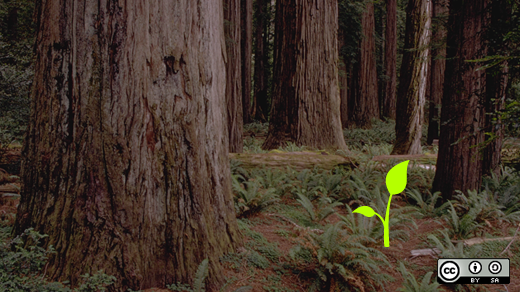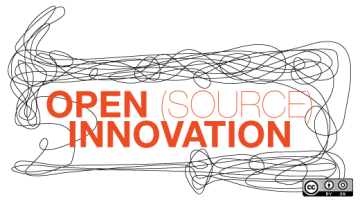In the first article of this series, I examined the nature of the innovation process in great detail. I also discussed some sources of resistance to it. In this second part of my review of Matt Ridley's book How Innovation Works, I will explain the ideal environment in which discoveries are born, protected, and progress into useful products and services, considering certain essential conditions for innovations to flourish. And I will argue that open organization principles are the keys to establishing those conditions.
Better when shared
Unfortunately, Ridley explains, history has shown that economic instability, downturns, and recessionary periods spur people toward more self-sufficiency and protectionism at the expense of productivity. That is, our attitude toward cooperation and interaction changes; people separate themselves from outsiders and tend to restrict interaction. In this environment, people, communities, and even entire countries fear dependence on others. Collaboration breaks down, feeding costly and counterproductive recessions (it's almost like reverting back to subsistence-living societies, where everyone only consumes and benefits from what they produce by themselves).
This attitude stifles innovation, as innovation occurs primarily when people are able to work with each other and utilize the principles of community, collaboration, inclusion, transparency, and adaptability.
Periods of economic stability and expansion, on the other hand, tend to create strong feelings of safety, which encourages mutual interdependence between people. As Ridley writes, "By concentrating on serving other people's needs for forty hours a week—which we call a job—you can spend the other seventy-two hours (not counting fifty-six hours in bed) drawing upon the services provided to you by other people." We do what we are good at and what we enjoy most, and then depend on others to do the things we do not do well and perhaps even dislike. When interdependence and cooperation are commonplace in a society, there tends to be an increase in innovative economic breakthroughs, specifically because of work providing specialized services. Simply put, working together to come up with new things leads to increased human productivity for all.
In this environment, open organizations come alive.
So let's examine the qualities that make those environments so fertile for innovation.
Where innovation thrives
Several factors are common throughout the innovation process, Ridley notes in How Innovation Works. Notice that open organization principles are involved in each of these factors.
1. Innovation is gradual.
If you look closely, you'll see that innovation does not often involve single breakthroughs. Instead, it's often a series of discoveries over months and even years. Innovations are gradual, incremental, and collective—over time. Unfortunately, we still tend to view innovations as the result of singular actors. This is due to several factors, Ridley explains:
- Human nature and a love of heroes: People love telling stories starring single heroes with key events as turning points in a linear series (what Jim Whitehurst calls "the innovation delusion"). These stories are more exciting and inspiring, perhaps, but not necessarily historically accurate (years of testing and making trial-and-error mistakes are not as interesting!).
- Intellectual property laws: Contemporary intellectual property systems attempt to ascribe all credit to single inventors and magnify that person's importance, overshadowing collaborators, competitors, and predecessors who contributed "stepping stone discoveries."
In truth, innovations are the result of gradual progress.
2. Innovation is serendipitous.
More often than not, innovative ideas come when one is looking for something else or trying to solve a completely different problem. They are accidental discoveries.
For example, Roy Plunkett was trying to improve a refrigerant fluid when he discovered Teflon. Other times, certain historical events turn researchers in directions they had not considered. This is a good reason why broad inclusivity and openness to the unexpected (adaptability) while working on a project are so important.
Sometimes, broad peripheral vision is far more important than what you're directly looking at. As serendipity plays a big part in innovation, societies that embrace a more free-roving, experimental nature do so well. This approach increases the chance of a lucky idea appearing. Innovation happens when people are free to think, experiment, and speculate. It happens when people can trade things, concepts, and ideas with each other (in other words, they collaborate—see below). This explains why innovative ideas seem to emerge more from cities than from rural areas, Ridley argues.
3. Innovation is a process of combining existing components.
Innovation is often the result of combining pre-existing products in new ways, or applying well-known components to unanticipated problems. Again, this occurs in places where people can meet and exchange goods, services, and thoughts (where they can collaborate). This explains why innovation happens in places where trade and exchange are frequent, and not in isolated or under-populated places. Innovation is born out of communities.
4. Innovation is iterative.
To innovate successfully, one must be willing to experiment and develop a high tolerance for error. One must not be shocked by set-backs; instead, we need to be overjoyed by learning from them. Most great discoveries come from data gleaned and lessons learned during failed experiments. Therefore, while collaborating, there should be an environment of playfulness. By just playing around, we help ideas come to the surface. This is why I prefer approaching problems with others by using the expression "let's just kick this idea around a bit." It keeps everyone open to new ideas and does not allow bias or strong narrowing positions to creep in, avoiding the tendency to shut down discussion too quickly.
The more and faster you make errors, the better. As Ridley states:
"Amazon is a good example of failure on the road to success, as Jeff Bezos has often proudly insisted. 'Our success at Amazon is a function of how many experiments we do per year, per month, per week. Being wrong might hurt you a bit, but being slow will kill you.' Bezos once said: 'If you can increase the number of experiments you try from a hundred to a thousand, you dramatically increase the number of innovations you produce.'"
This is where open organization principles are important. If you have a wide community experimenting and feeding their results back to you, imagine how quickly you will find a solution (or new opportunities, for that matter) while looking at a failure with many eyes and perspectives.
5. Innovation is collaborative.
No one innovates in isolation. Others always play a role—whether large or small—in your innovations. The best ideas are stored between two or more minds, not in one single mind.
Therefore, transparency to what is in everyone's minds and collaboration on that content are vital. Quite often, one person comes up with a product idea, then another person finds ways to manufacture it, then a third person looks at that manufacturing process and comes up with a way to execute it in a far less expensive way. All these phases are part of the overall innovation—but we focus only on one in the stories we tell about it. More often than recognized, it was a team, a collective effort, that led to success.
Moreover, Matt Ridley argues that most innovations do not come from producers. More frequently, they come from consumers that want to improve on what they are using. So when we explore open organization communities, we must remain focused on the ways these communities incorporate feedback they receive from outside themselves, perhaps from users of related products, and find someone among them that wants to improve on them.
Free to innovate
"The main ingredient in the secret sauce that leads to innovation is freedom," Ridley writes. "Freedom to exchange, experiment, imagine, invest and fail; freedom from expropriation or restriction; freedom on the part of consumers to reward the innovations they like and reject the ones they do not." This freedom will have to be supported by sensible regulations that are permissive, encouraging, and quick to give decisions (Ridley is critical of current intellectual property regulations, citing a negative impact on the innovation process). We have to take a good look at the hurdles blocking innovation, as this exploration process should be promoted.
In the next part of this series, I'll provide an overview of actual cases of various innovations throughout history and explain how open organization principles played a role in shaping them.







Comments are closed.